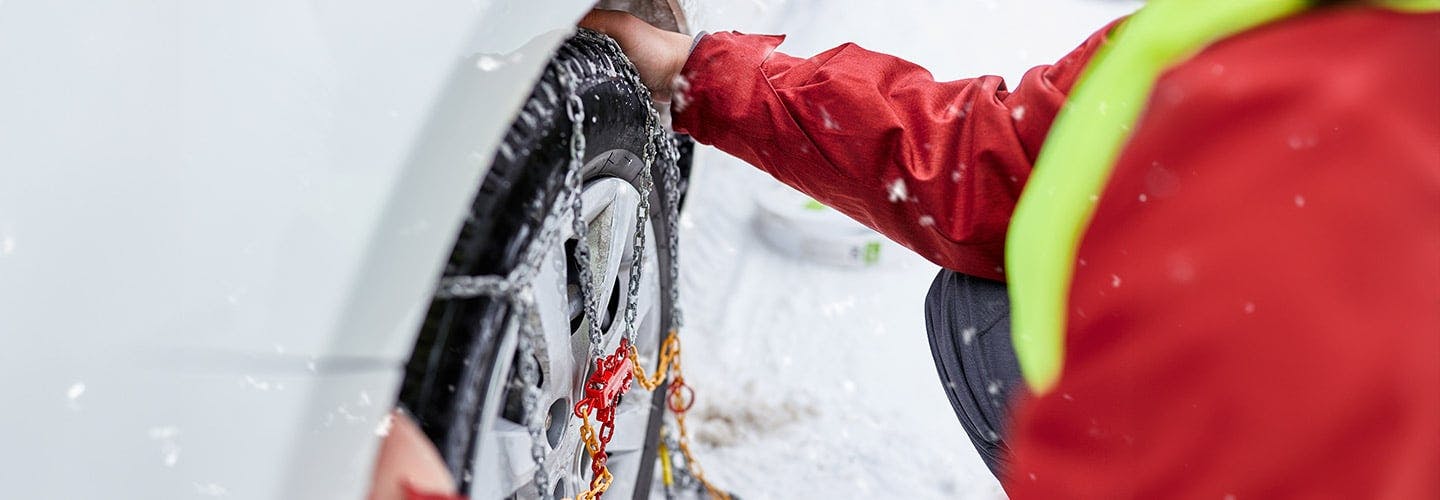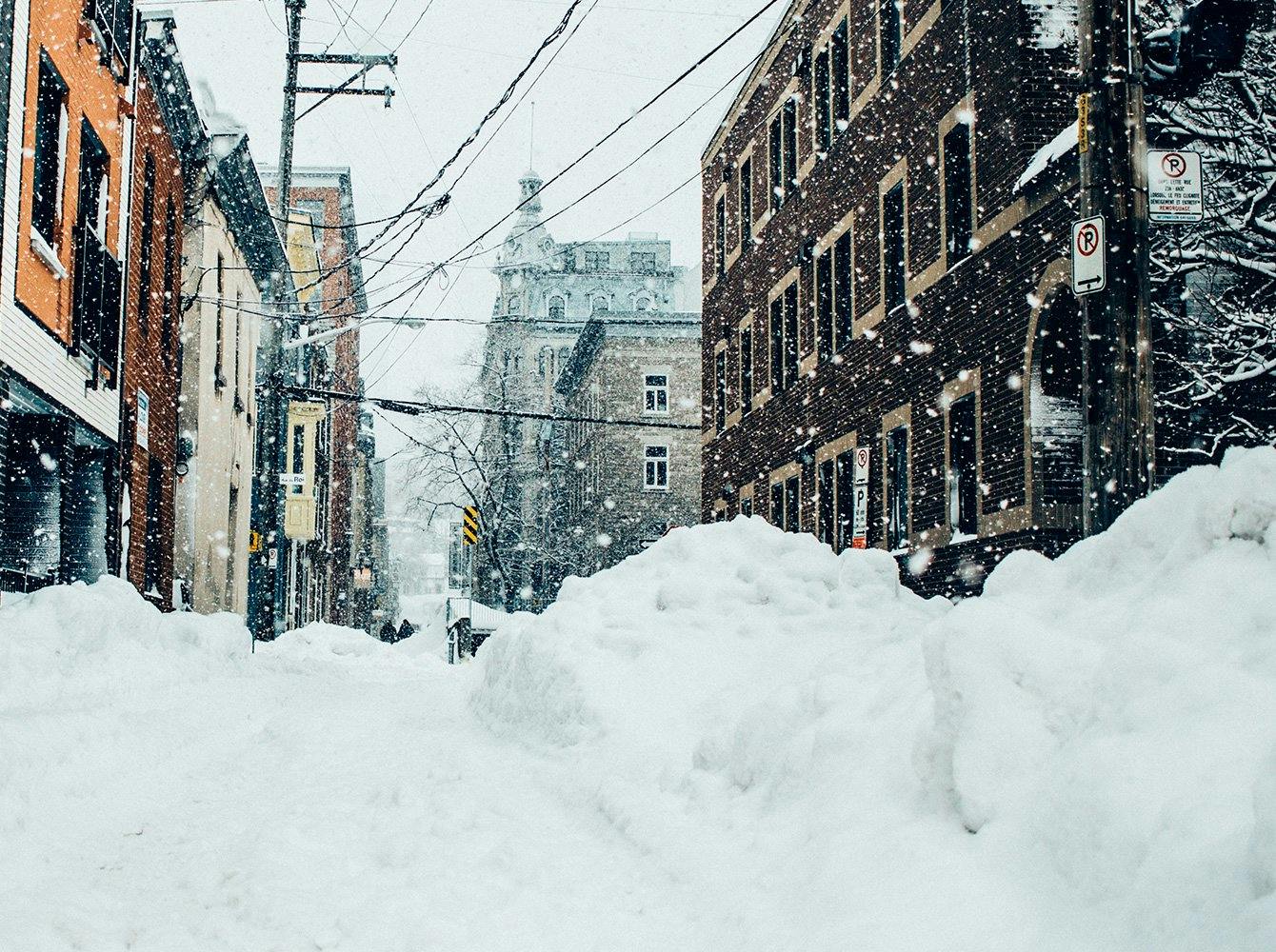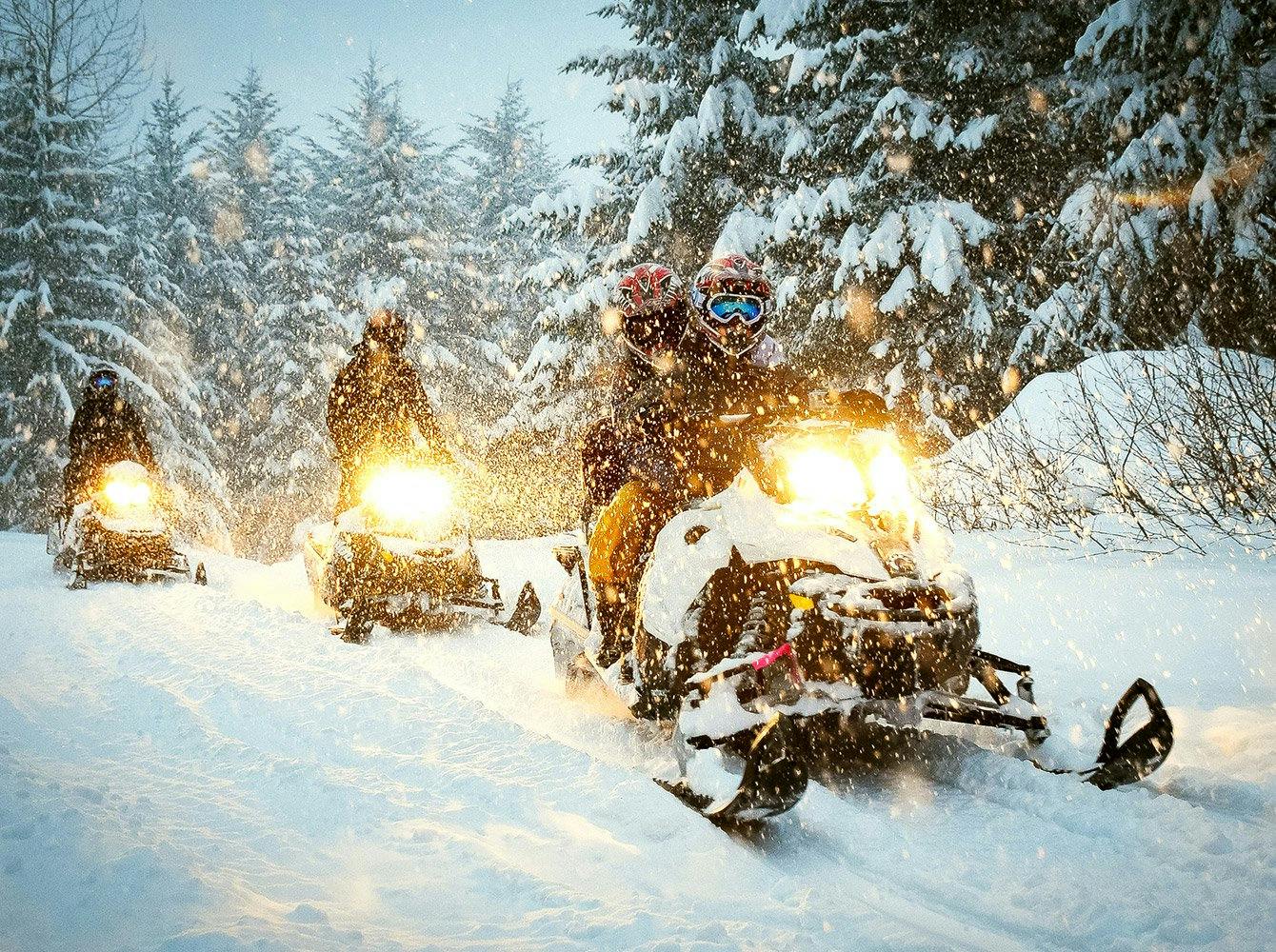Winter driving tips for safe commutes
- Planning ahead
- Auto insurance

Snow-covered hills, crisp air and black ice. One of these things is not like the others. Winter is a beautiful season, but it can be challenging for drivers no matter where they are in the U.S. Icy roads, reduced visibility and unpredictable weather conditions can turn even a short commute into a treacherous journey. To navigate this winter wonderland safely, it's essential to make sure that both you and your vehicle are well-prepared. We’ve compiled some of our best winter driving tips to help you prepare for the season and keep your winter more hot cocoa and less hospital.
Preparing your vehicle for winter
Preparing your vehicle for winter is a matter of safety. A well-prepared vehicle can help you avoid accidents, breakdowns and stress in treacherous winter conditions. But what does it mean to prepare your vehicle for winter?
Get a winter tune-up
One of the first steps in preparing your vehicle for winter is getting a winter tune-up from a qualified mechanic. This tune-up should include at least the following checks.
- Engine health – Colder temperatures can be hard on engines, and a well-tuned engine is less likely to stall or fail in extreme cold.
- Battery check – Cold weather reduces a battery's efficiency, so having it tested and replaced, if necessary, can prevent unexpected breakdowns on chilly mornings.
- Fluids and oil – Cold weather can cause fluids to thicken, making it harder for your vehicle to function properly. A winter tune-up sets all fluids, including engine oil, transmission fluid and antifreeze, at the right levels for colder temperatures.
- Heating system – A tune-up keeps your heating system in good working order, so you don't find yourself shivering while you drive.
Check your tire pressure and invest in snow tires
Proper tire maintenance will keep your car on the road through the ice. Here’s what you need to consider.
- Tire pressure – Cold air can cause your tire pressure to drop, which affects your vehicle's handling and traction. Regularly check your tire pressure and keep it at the recommended level for winter driving – your car’s manual can tell you what that level is for you. Properly inflated tires provide better grip and control.
- Snow tires – If you live in an area prone to heavy snowfall, consider investing in snow tires. Snow tires are specially designed to provide better traction in snow and ice, enhancing your vehicle's stability and safety during winter.
Pack an emergency kit
No one expects a breakdown, but it's wise to be prepared. Create an emergency kit to keep in your car in case you are stuck on the side of the road. We suggest the following items, but consider your own needs and add to the list accordingly.
- Flashlight
- Flares or reflective triangles
- Blankets
- Non-perishable food and water
- First aid kit
- Shovel and traction aids
Driving in winter weather
While preparing your vehicle for winter is a solid step toward winter safety, your driving habits play a significant role in keeping you safe during the winter season. Winter weather conditions can be unpredictable, but adopting the right practices to navigate icy or snowy roads can help you avoid accidents. We’ve compiled these practical tips to keep you and your passengers safe.
Slow down and increase following distance
Slowing down and leaving extra space are fundamental principles of safe winter driving. The reduced traction caused by snow and ice makes it harder for your vehicle to grip the road; driving at a slower speed allows for better control. More than that, a lower speed means a higher reaction time, giving you time to better respond to unforeseen situations on the road. Another way to get more time to react is leaving extra space between your vehicle and the one ahead of you. The more space you have in front of you, the more time you have to apply the brakes gently, and the lower the chances of collisions.
Avoid sudden braking and acceleration
Exercise a gentle and progressive approach to prevent wheel lock-up when braking on ice and snow. For vehicles equipped with antilock brakes (ABS), maintain firm pressure on the brake pedal, as the system automatically adjusts brake pressure to avert skidding. Similarly, during acceleration, particularly when starting from a standstill or attempting to gain momentum, adopt a gradual approach to avoid wheel spin. A light touch on the gas pedal will help maintain traction and mean a smoother and more controlled driving experience on icy surfaces.
Exercise caution on bridges and overpasses
Bridges and overpasses tend to freeze earlier than other parts of the road. Be cautious when driving over or under these structures. That means reducing your speed and exercising extra caution as you approach to account for potential icy hazards. While on these surfaces, avoiding abrupt changes in speed or direction, which could result in a loss of control over your vehicle. At all stages of driving around bridges and overpasses, stay alert. Patches of ice, including black ice, may be present on elevated roadways.
Know how to handle skids
Sometimes a skid is inevitable. Knowing how to handle them will keep you safe. Most importantly, stay calm. Panicking and actions like slamming on the brakes or excessive steering corrections will make the situation worse. Instead, and somewhat counterintuitively, steer into the skid. This aids in regaining control of your vehicle. Simultaneously, remove your foot from the gas pedal to decrease speed and reestablish traction. If needed, apply the brakes – gently – to slow down once control has been regained.
Enjoy the ride with the right auto insurance
Dealing with common winter driving hazards
Knowing how to navigate common winter driving hazards is essential for staying safe on the road. In this section, we'll discuss strategies for dealing with some of the most prevalent winter driving hazards, including black ice, snow drifts and whiteouts.
Navigating black ice
One of the most dangerous winter driving hazards is black ice – a nearly invisible, thin layer of ice on road surfaces, which is extremely difficult to detect. If you encounter black ice on the road, you should:
- Slow down and be cautious – If you suspect you're driving on black ice, reduce your speed immediately. Keep your steering wheel steady and avoid sudden movements.
- Increase following distance – Maintain a safe following distance from the vehicle ahead. This gives you more time to react if you start to slide.
- Do not brake suddenly – Avoid sudden braking, as it can cause your wheels to lock up and cause a skid. If you need to slow down, do so gently and progressively.
- Use low gears – If your vehicle has a low gear setting, use it to help control your speed on icy surfaces.
Tackling snow drifts
Snow drifts can be a significant obstacle during winter driving, potentially causing your vehicle to get stuck. Here's how to deal with them:
- Attempt to drive around – If you encounter a snow drift, try to drive around it if it's safe to do so. Use caution, as drifting snow can obscure obstacles or other vehicles.
- Rock your vehicle – If you can't avoid a snow drift and your vehicle becomes stuck, try the rocking technique. Shift between forward and reverse gears while gently applying the gas to rock the vehicle back and forth. This can help free your vehicle from the snow.
- Use traction aids – Carry traction aids like sand or cat litter in your vehicle. Sprinkle them around your tires to improve traction when stuck in a snow drift.
- Shovel and dig – Keep a shovel in your vehicle during the winter months. If you become stuck in a snow drift, dig out the snow in front of and behind your tires to create a path for your vehicle.
Handling whiteouts
Whiteouts occur when heavy snowfall or fog reduces visibility to near-zero levels, making driving extremely hazardous. Avoid driving in these conditions if possible, but if you are on the road when you encounter a whiteout, try these winter driving tips:
- Pull over safely – If you find yourself driving in a whiteout, pull over to the side of the road as soon as it's safe to do so.
- Turn on hazard lights – Turn on your hazard lights to make your vehicle more visible to other drivers. Keep these lights on while you’re pulled over as well.
- Stay in your vehicle – In severe whiteout conditions, it's safer to stay inside your vehicle with your seatbelt fastened rather than venturing out into the storm. Keep warm with your vehicle's heating system and wait until conditions improve before continuing your journey.
Winter driving mishaps
No matter how many precautions you take or safe driving practices you follow, winter driving mishaps can still occur. So what do you do when the unthinkable happens?
Getting stuck in the snow
Getting stuck in the snow is a common winter driving mishap, especially in heavy snowfall or when driving on unplowed roads. Here's how to handle this situation:
- Rock your vehicle – Alternate between forward and reverse while gently applying the gas pedal. This rocking motion can often help your vehicle gain traction and free itself from the snow.
- Use a shovel – If rocking your vehicle doesn't work, or if your wheels are spinning and not gaining traction, use a shovel to clear away the snow from in front of and behind your tires. Creating a path can make it easier for your vehicle to move.
- Traction aids – If you have sand, cat litter, or traction mats in your vehicle, place them under your tires to improve traction.
- Turn your steering wheel – While attempting to free your vehicle, turn your steering wheel from side to side. This can help clear out a pathway for your tires.
Sliding off the road
Sliding off the road, especially on icy or slippery surfaces, can be scary. If it happens to you, try these steps:
- Stay calm – This is the most critical step: stay calm and avoid panic. Keep both hands on the steering wheel.
- Avoid abrupt actions – Do not slam on the brakes or make sudden steering corrections. Gradual, gentle movements are key to regaining control.
- Assess the situation – If you're unable to steer back onto the road or feel unsafe doing so, it may be best to stay where you are. Turn on your hazard lights to make your vehicle more visible to other drivers.
- Call for help – If you're unable to free your vehicle or if the conditions are too hazardous, call for assistance. Contacting a tow truck or emergency services may be necessary.
Winter driving offers both beauty and challenges. Following the winter driving tips outlined in this post will enable you to appreciate the season's beauty while prioritizing road safety and reaching your destination without incident. There’s never a surefire way to avoid incident though. No matter how careful you are, accidents happen and you can’t control the other drivers. Take a moment before winter to talk to the VIU by HUB Advisory Team to make sure that you’ve got the right coverage, just in case.
A panoramic outlook on
all things insurance
The VIU Point is here to help you make sense of it all, so you can confidently compare auto insurance quotes and make the best policy decisions.


